Astrophotographers show off their favorite stargazing sites on Earth
Check out photos from these stellar locations!
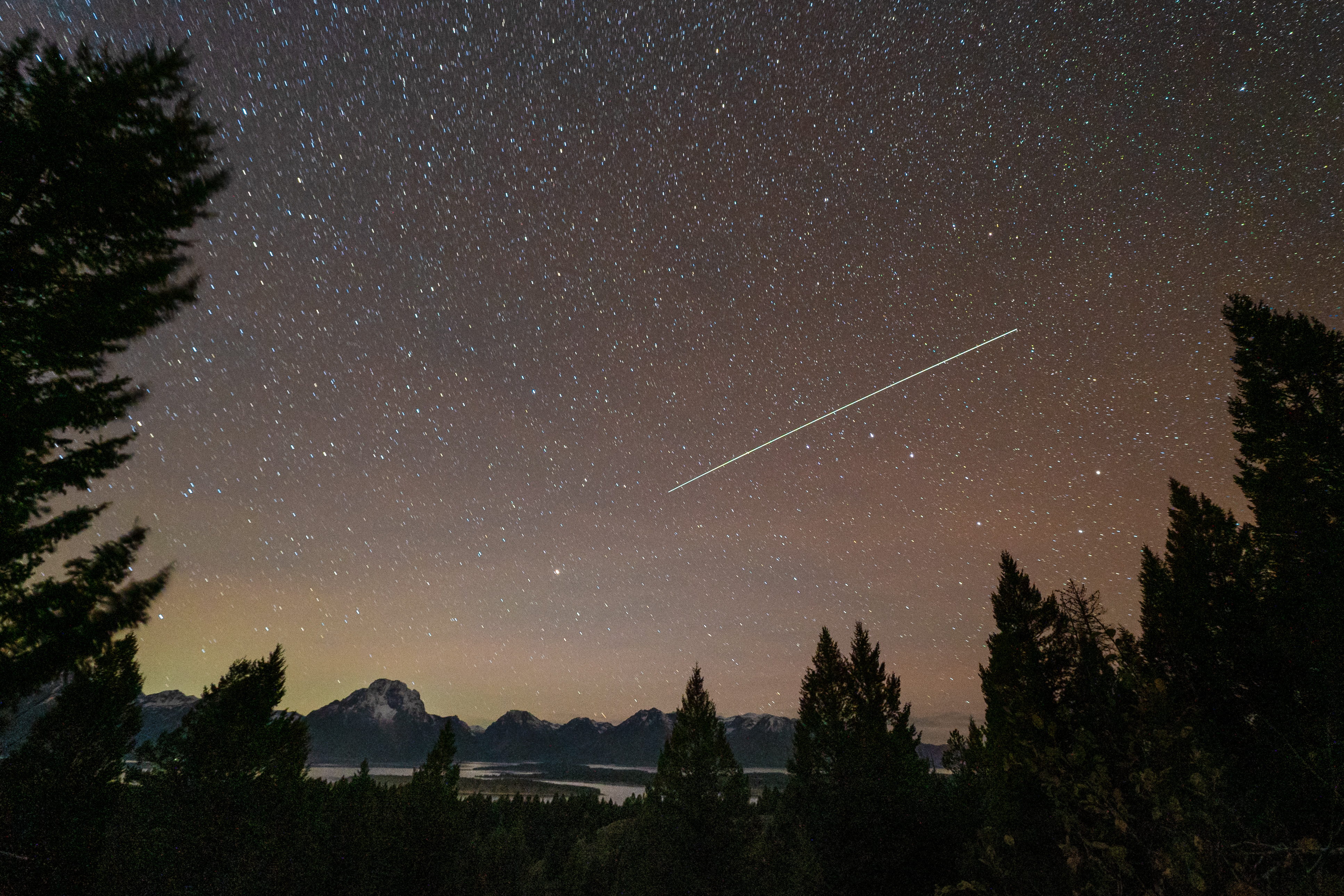
If you're looking to go on a virtual adventure, you can safely explore some of the most beautiful skywatching sites from the safety of your home with the help of some stellar astrophotography.
Several skywatching enthusiasts have shared their favorites stargazing sites with Space.com and sent in their incredible photos of what the view looks like in these areas. Whether it's a spectacular dark-sky vista or a gorgeous skyline, these beautiful photographs showcase what you can experience the next time you're able to travel for real.
Here are their favorite locations, in their own words (edited for length or clarity).
Related: How to Snap Awesome Night-Sky Photos with Your Smartphone
Rogelio Bernal Andreo / DeepSkyColors.com
Eureka Dunes – Death Valley National Park, California
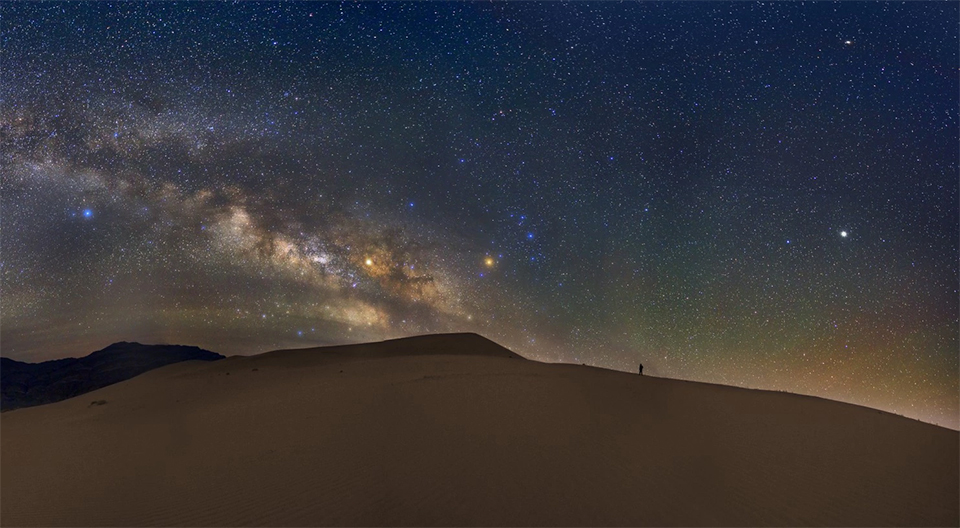
Death Valley National Park is famous for its remoteness and dark skies. Still, if you avoid the more popular spots and head over the even more remote areas like the gorgeous Eureka Dunes, that's when you can really feel that it's just you, the landscape and a sky full of stars almost literally falling on you. (P.S.: The guy climbing the dune is me, it's a selfie!)
Get the Space.com Newsletter
Breaking space news, the latest updates on rocket launches, skywatching events and more!
Tenaya Lake – Yosemite National Park, California
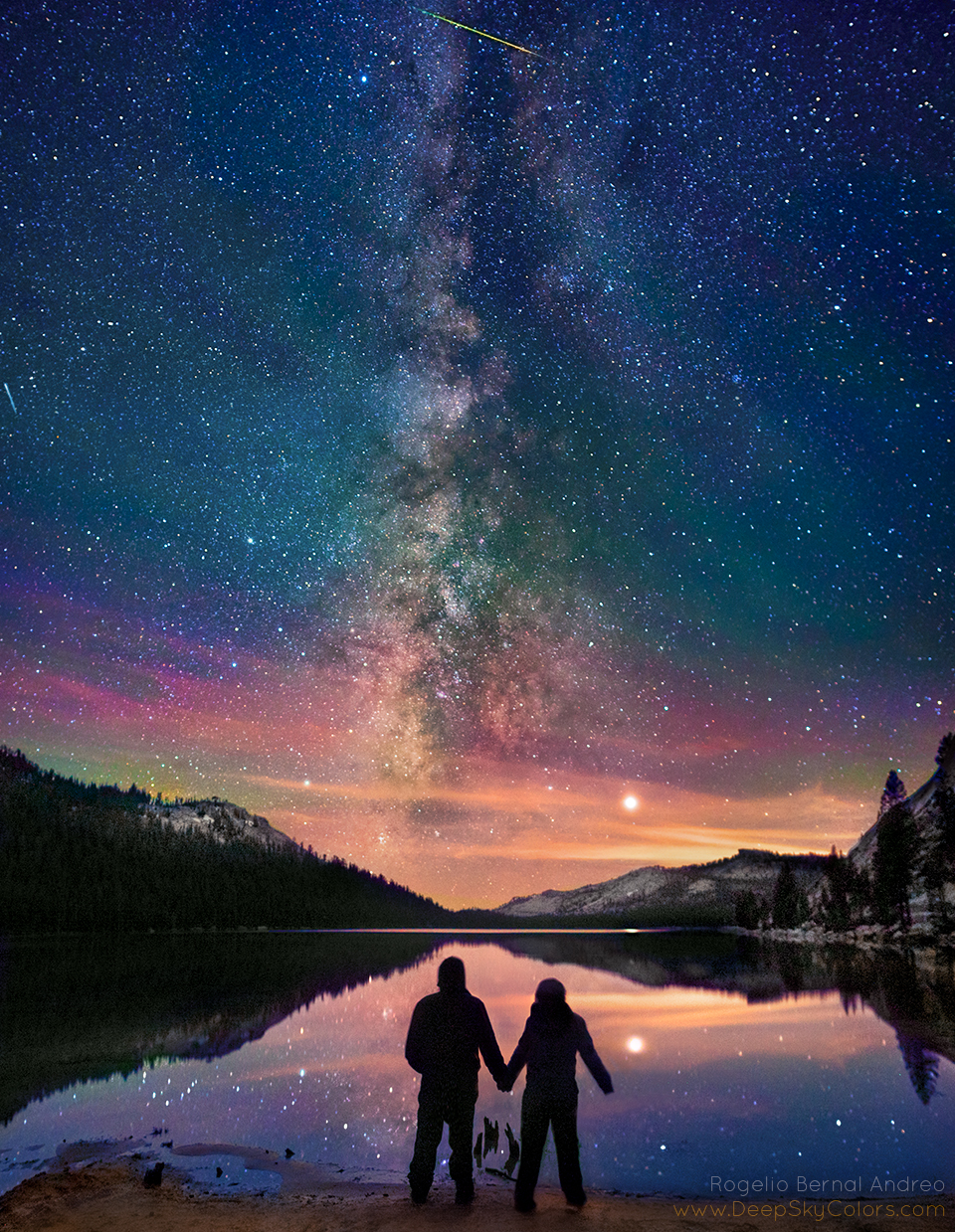
When friends ask me what is my favorite place in Yosemite, I always answer: I can't pick one. There's too many "favorite" places in Yosemite. However, there's always one place I wait for the road to clear every year for so I can go and stay there an entire night. When you see the stars barely twinkling, reflected in the water, you know you're witnessing absolute tranquility. (P.S.: The image is not a composite. My wife Ariana and I.)
Hālawa Bay – Moloka'i, Hawai'i

Mike Taylor / www.miketaylorphoto.com
Hunters Beach – Acadia National Park, Maine
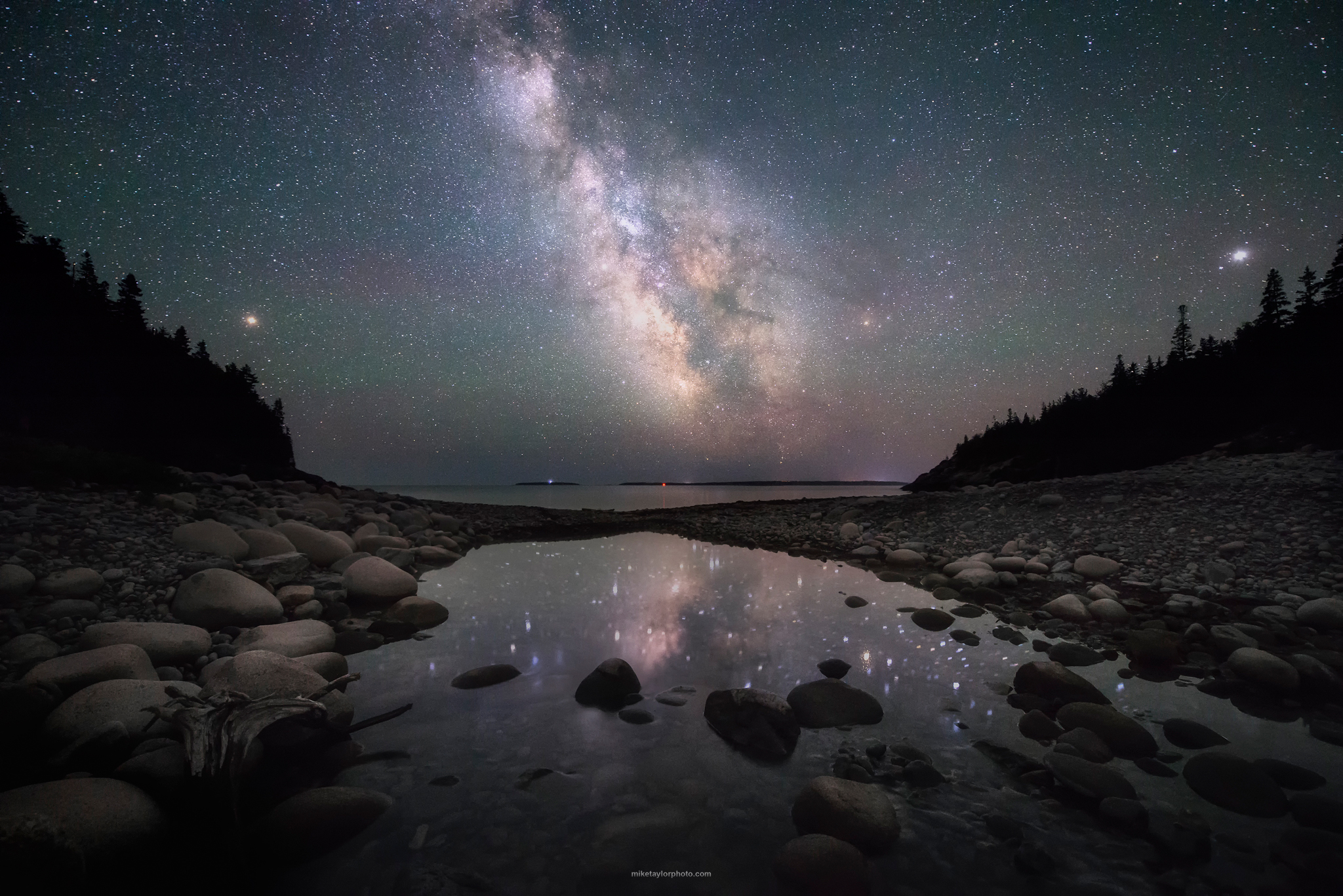
This is a great location to view and photograph our beautiful Maine night skies. The tidal pool in the foreground makes for fantastic reflections of the stars.
Totem Pole – Monument Valley, Arizona
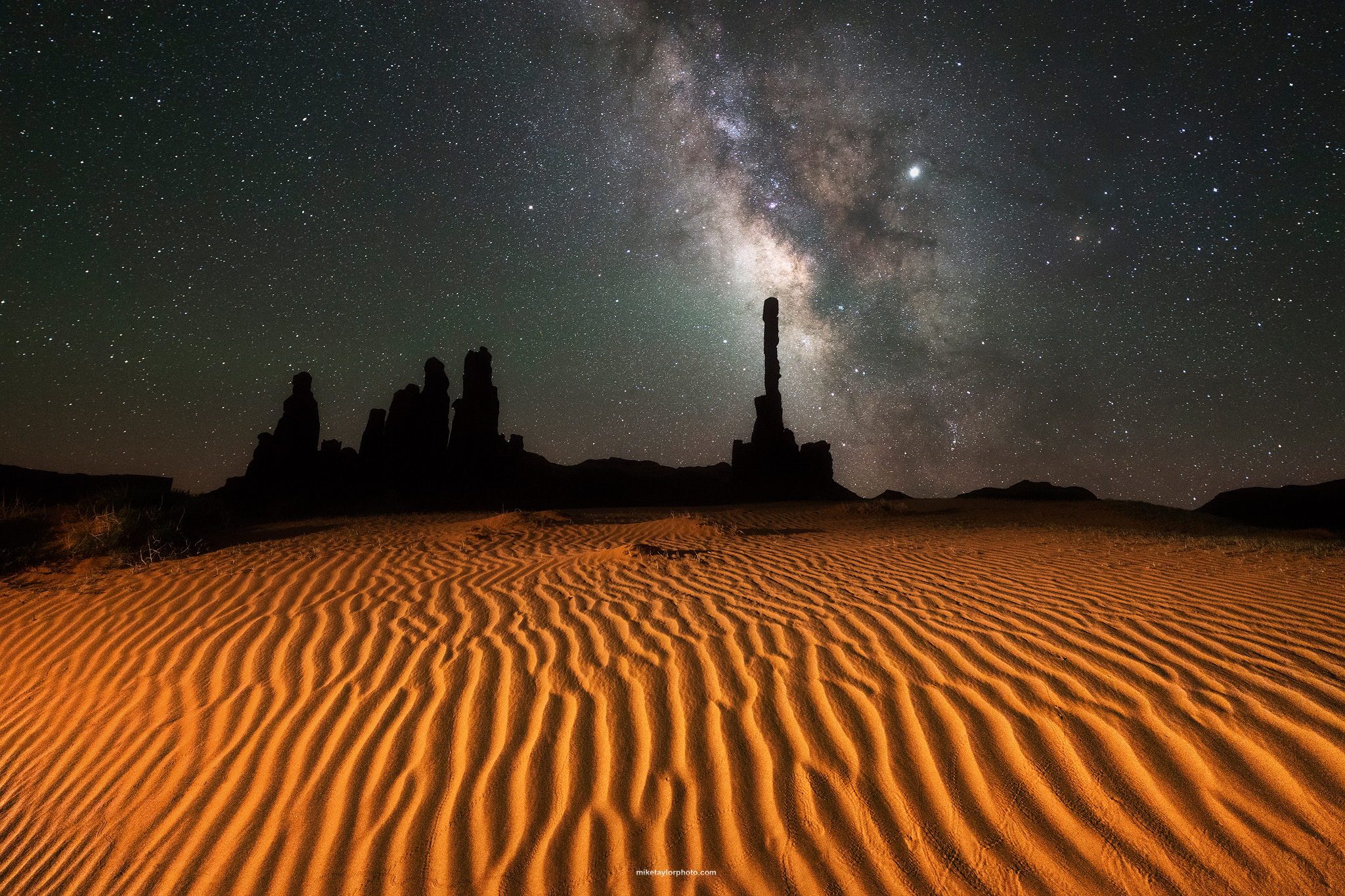
The Milky Way makes a dramatic background for the iconic Totem Pole, which rises 381 feet (116 meters) above the valley floor. The most impressive features of this location are undoubtedly, the wind-swept ripples of sand in the foreground.
Cape Porpoise – Maine
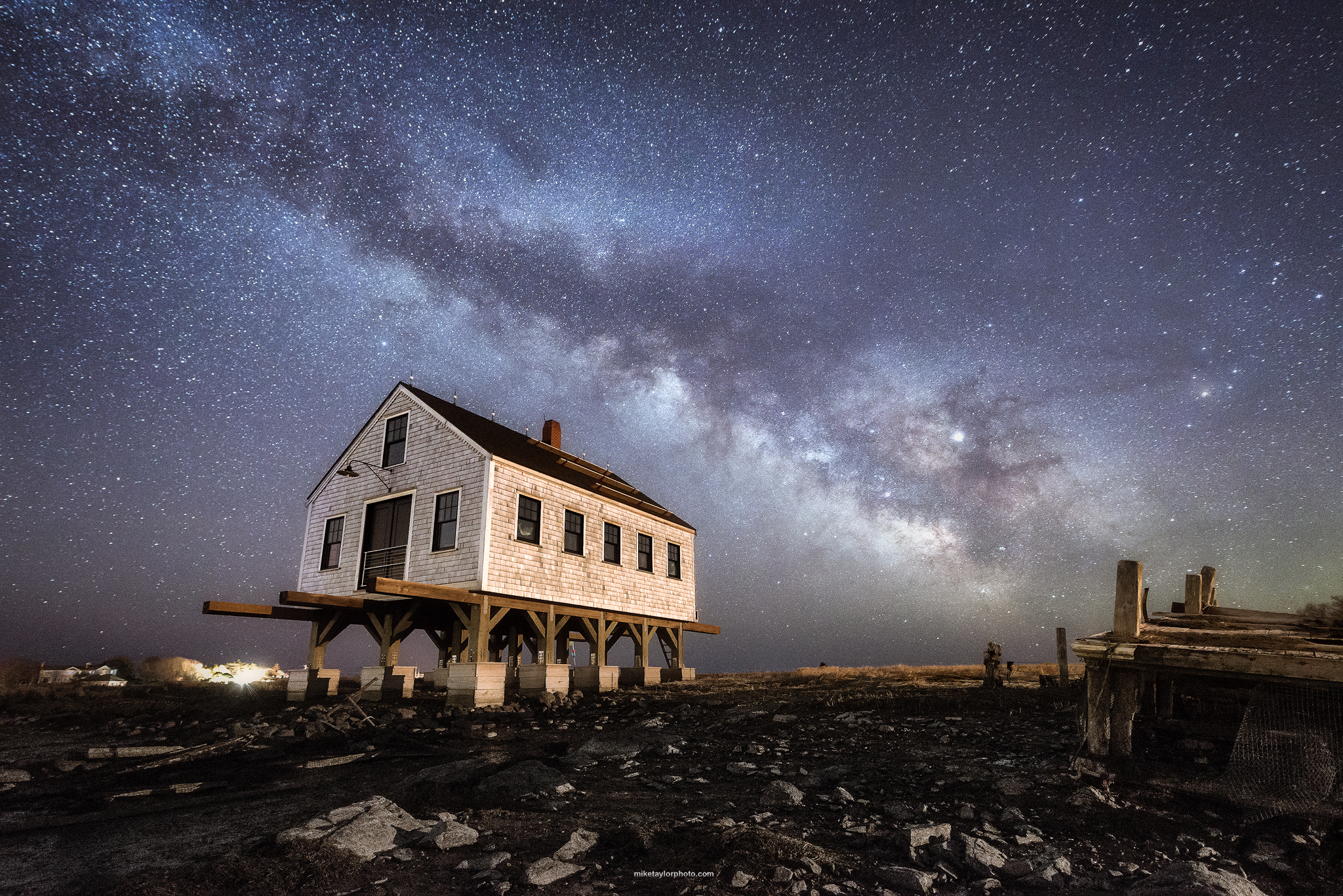
This shack in Cape Porpoise, Maine has recently become a well-photographed feature on the southern Maine coast since it was erected in 2017. There have been many shots of this building during sunrise and sunset, but very few have been taken at night with the Milky Way in the background.
Chirag Upreti / chiragupreti.com
Statue of Liberty – New York City
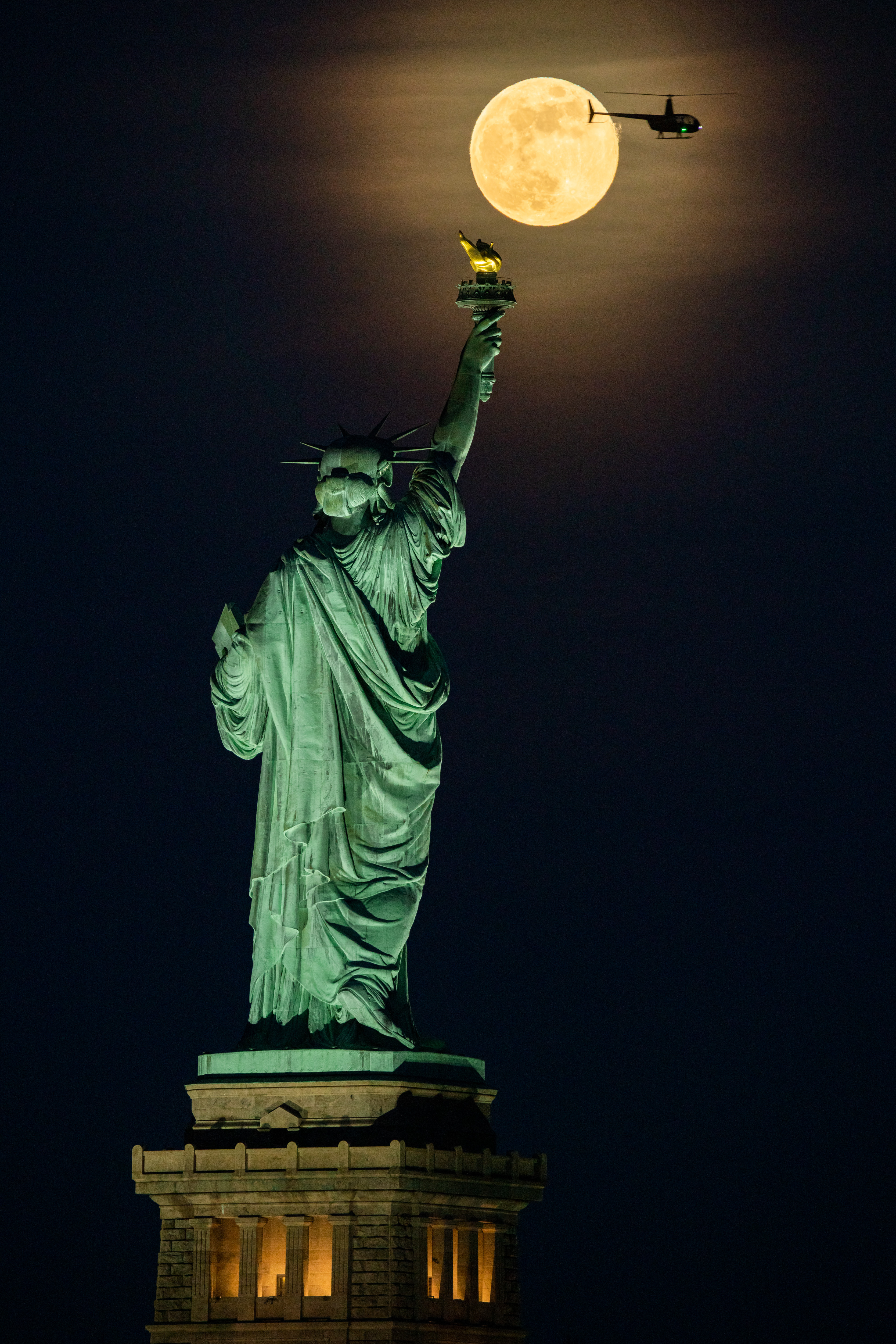
I particularly like the Statue of Liberty as a subject because it is a powerful and universal symbol of freedom. Additionally, the east and west horizon are mostly quite open, with no high-rise buildings blocking the moonrise or moonset view.
In this image, the Full Blue Flower Moon of May 2019 can be seen over the horizon in early twilight with haze or thin clouds in the atmosphere. Later, this haze persisted to give a slightly diffused lunar corona.
I planned this shot using a tool called 'The Photographer's Ephemeris' to get the full moon to pass just around the torch of the Statue of Liberty, an iconic symbol of enlightenment. Being just a couple of degrees over the horizon, I expected the moon to be a golden yellow color, which would complement the gold of the torch, magnifying its symbolism that the "Statue of Liberty's torch lights the way to freedom, showing us the path to Liberty," as stated by the National Park Service.
Signal Mountain – Grand Teton National Park, Wyoming

I planned this shot before leaving for my trip to Wyoming using www.heavens-above.com. From this website, I knew in advance that the International Space Station would fly past the star Arcturus and close to the Big Dipper constellation. During the day I scouted the location atop Signal Mountain, which gave me a clear view of the mountain range, with Jackson Lake peeking between the foliage, giving the impression of a river.
Mount Moran dominates this northern section of the Teton Range, with its Skillet Glacier visible. I had a visual of the space station streaking across the sky as it became brighter and when it crossed Arcturus (bright star over the mountain range). Once the space station went past it, I opened my shutter for a long exposure to capture the flyby as a single unbroken streak, as it grazed past the Big Dipper. Slight green and red airglow can also be seen in the sky and on the horizon, along with artificial airglow — likely from Idaho Falls that lies west of these mountains.
Vík, Iceland
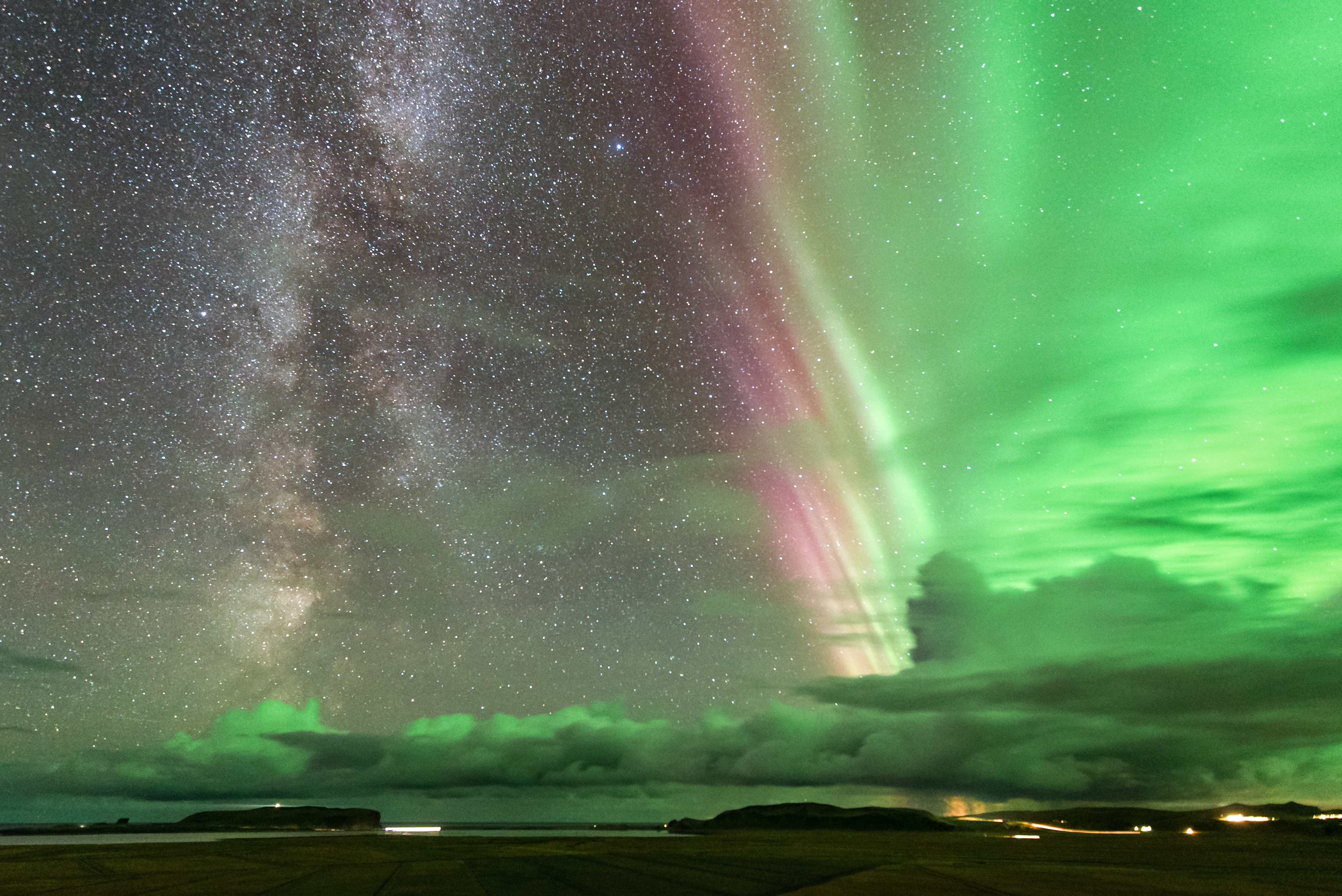
I saw my first aurora borealis on the airplane ride to Iceland. I remember seeing these shape-shifting, grey clouds outside the airplane window and thought to myself, "This is weird." So I took out the camera, shielded the lens from the cabin lights and shot a few frames. The clouds were wispy green and I could barely contain my enthusiasm.
The sky over the city of Vík was predicted to be cloudy for the night, and the chance of shooting this night were dim, but there was a lucky break in the cloud cover that revealed the near vertical Milky Way in this dark site. I could see this flickering wall of light coming from the northern side. The illumination of the sky by this aurora as it approached the Milky Way was in stark contrast to the dark sky. About 10 to 15 minutes after this shot, the green glow enveloped the sky and the details of the Milky Way were lost. Soon after, the clouds came in and I called it a night.
Miguel Claro / www.miguelclaro.com
Dark Sky Alqueva reserve, Portugal
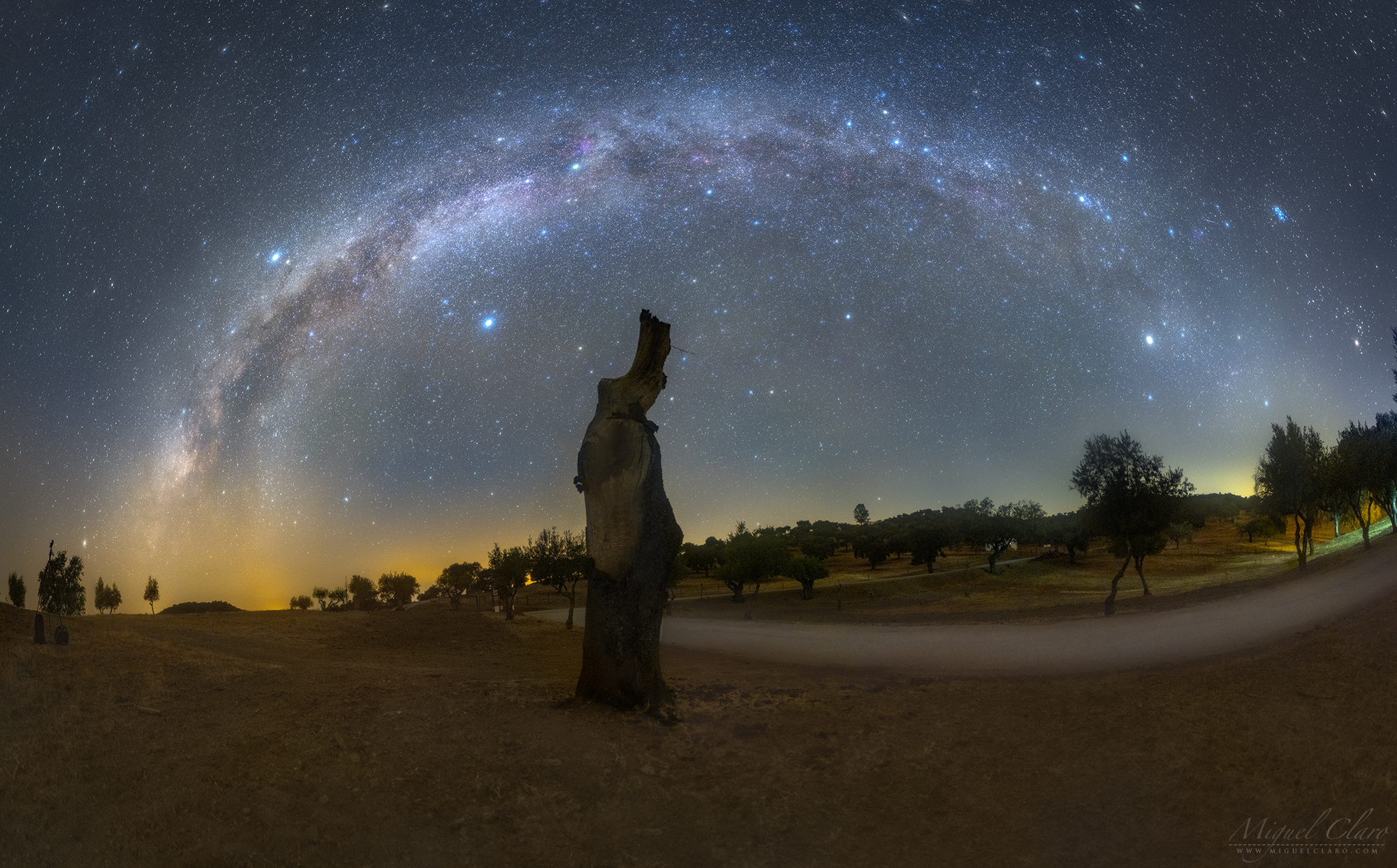
This starry night scene was captured at the end of the summer season from Noudar, in Dark Sky Alqueva territory, in Portugal. This image shows the mosaic image of a galactic arch above a dead tree. The arch itself is a summer Milky Way that is gradually disappearing in the western horizon due to the time of the year. While in the opposite direction of the arch, the winter Milky Way is starting to appear in the eastern sky with the Auriga and Taurus constellations shining bright. While stars from the Summer Triangle are getting low — in the left side of the sky, the blueish star cluster of the Pleiades is gradually getting higher, as seen on the right side of the image.
Atacama Desert, Chile
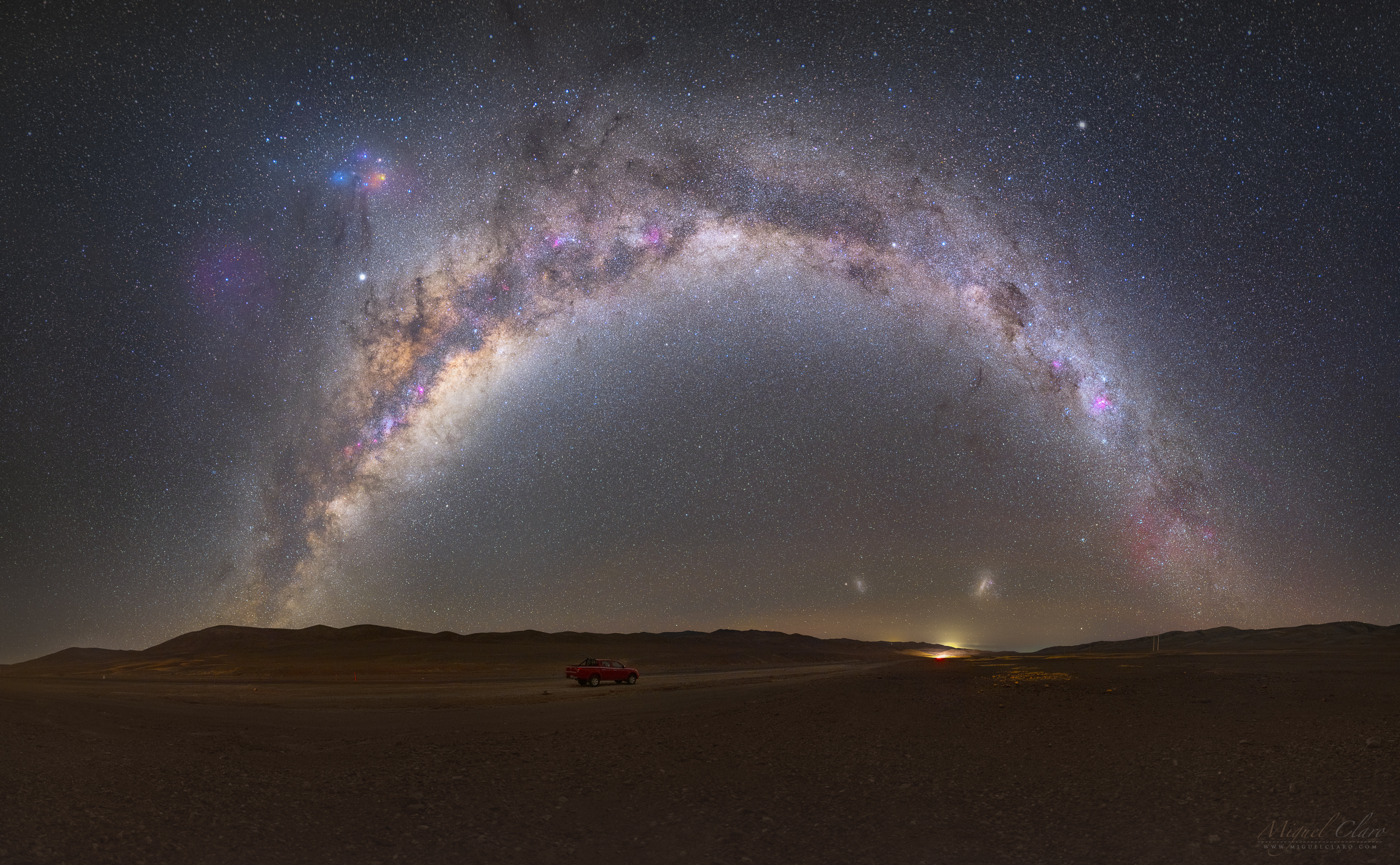
After a long car trip from Antofagasta to Copiapó in Chile, we rested somewhere in the middle of the Atacama Desert. While my road trip partner was trying to recover from a long, 5-hour drive, I decided to skip the rest and go outside to capture a wonderful night scene, which i made into a large mosaic made of 19 single shots.
The solitude of this scene was really mesmerizing; looking into a vast reddish rocky desert where a small red car stands below the astonishing arc of the Milky Way. There's really nothing separating us human beings from the universe we see outside. Beyond the landscape, the image features the dusty heart of our galaxy as well as many regions of dark dust and star clusters. Other galaxies are also shining, like the Large and Small Magellanic Clouds, visible close to the horizon.
The colorful region on the top left is the Rho Ophiuchi cloud complex and not far away, a bright white light belongs to planet Jupiter. In the opposite direction, on the right top corner, you can see the largest globular cluster in the Milky Way. This is Omega Centauri, which has approximately 10 million stars.
Seljalandsfoss Waterfalls, Iceland
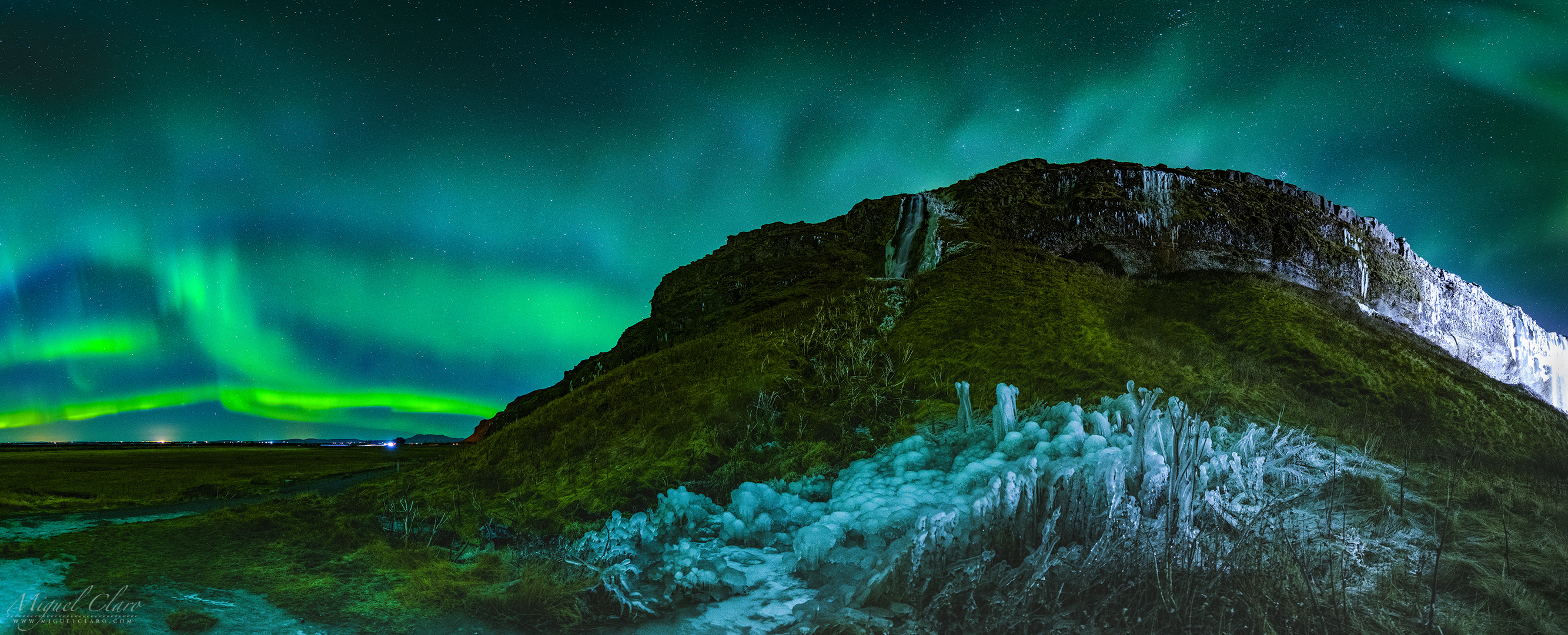
Here is a panoramic scene featuring a green aurora above the Seljalandsfoss cliffs, filled by small waterfalls and captured during a surprisingly active night at the end of October. In the foreground, you can see iced vegetation with crystal shapes reflecting the green hues presented in the sky.The solar wind sparked beautiful greenish auroras that could be seen over Iceland during that period. Fortunately, thanks to a clear sky forecast and some aurora chasing done by car, I could show them on a still single photo.
- Beginner's guide to astrophotography
- Turn your smartphone into an astronomy toolbox with mobile apps
- Star chart virtual reality app puts planetarium on your smartphone
Follow Elizabeth Howell on Twitter @howellspace. Follow us on Twitter @Spacedotcom and on Facebook.
OFFER: Save 45% on 'All About Space' 'How it Works' and 'All About History'!
For a limited time, you can take out a digital subscription to any of our best-selling science magazines for just $2.38 per month, or 45% off the standard price for the first three months.
Join our Space Forums to keep talking space on the latest missions, night sky and more! And if you have a news tip, correction or comment, let us know at: community@space.com.

Elizabeth Howell (she/her), Ph.D., was a staff writer in the spaceflight channel between 2022 and 2024 specializing in Canadian space news. She was contributing writer for Space.com for 10 years from 2012 to 2024. Elizabeth's reporting includes multiple exclusives with the White House, leading world coverage about a lost-and-found space tomato on the International Space Station, witnessing five human spaceflight launches on two continents, flying parabolic, working inside a spacesuit, and participating in a simulated Mars mission. Her latest book, "Why Am I Taller?" (ECW Press, 2022) is co-written with astronaut Dave Williams.










